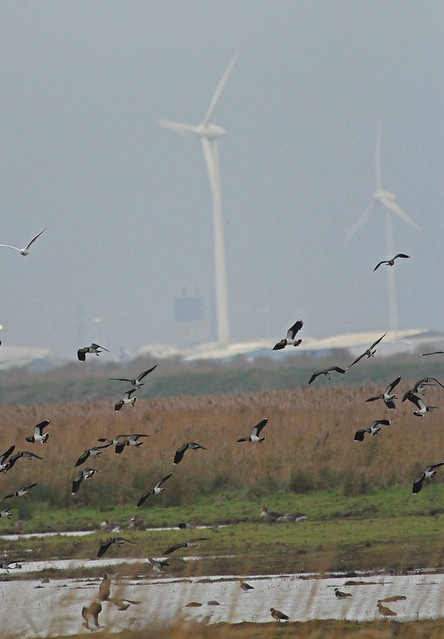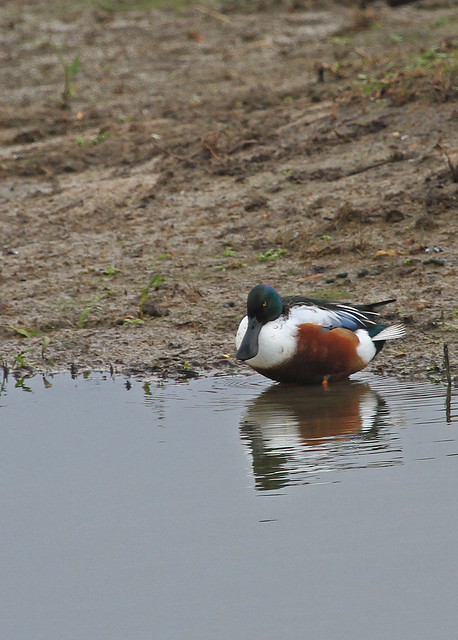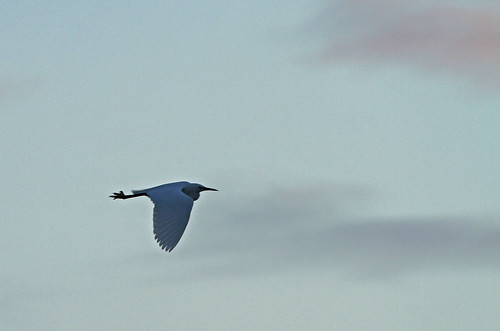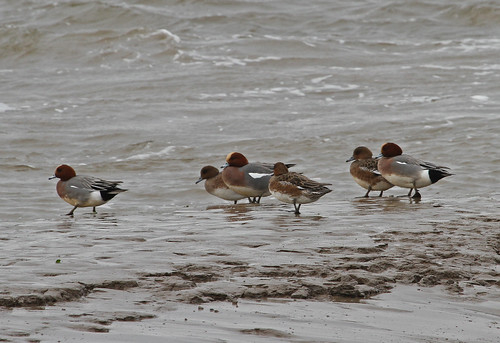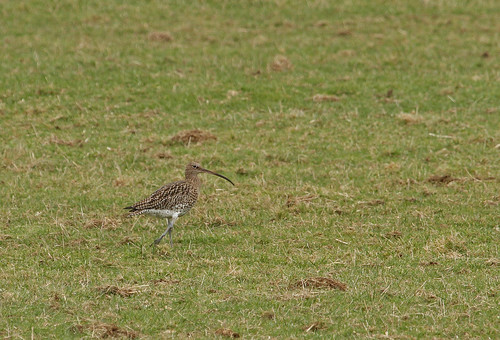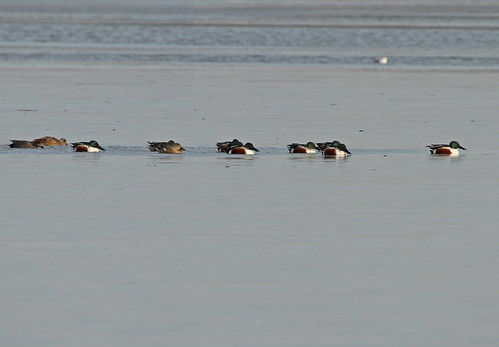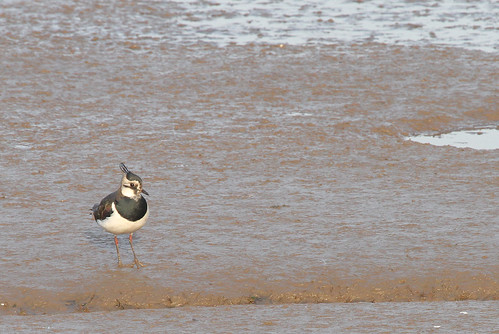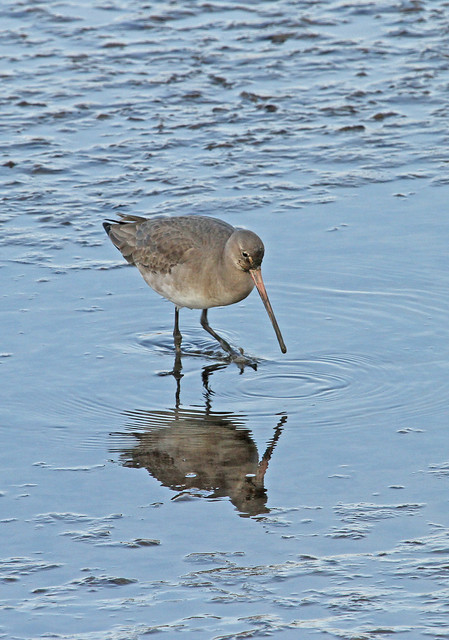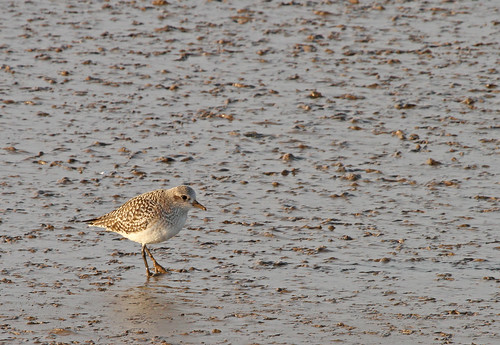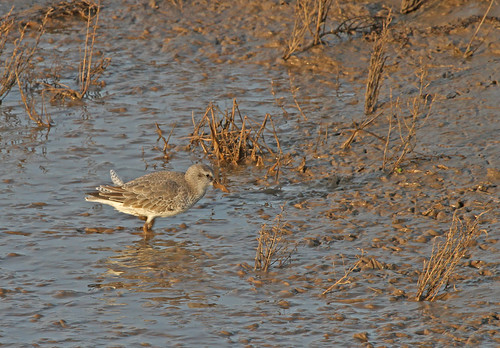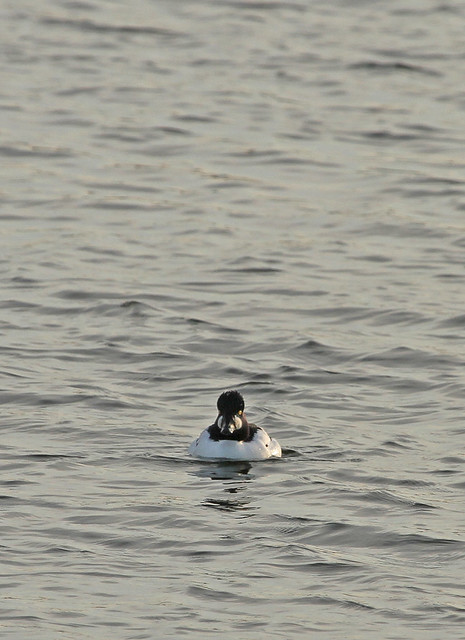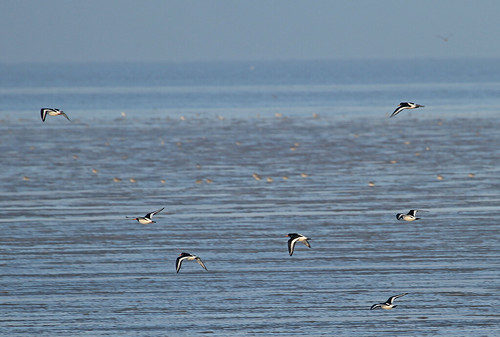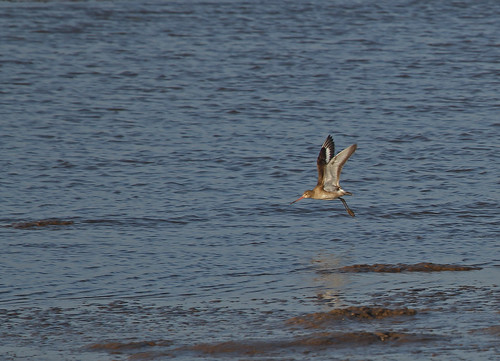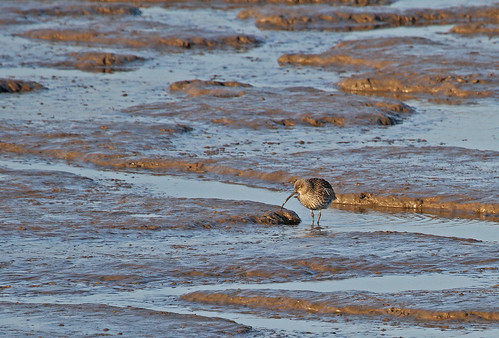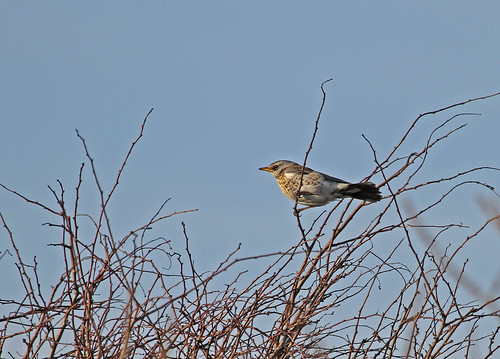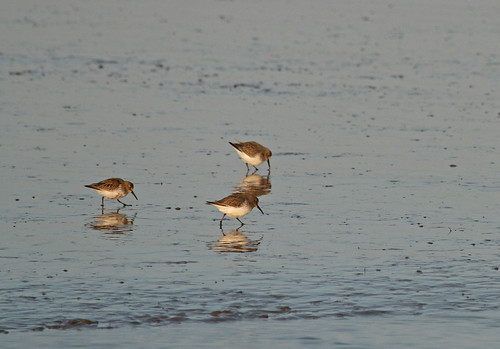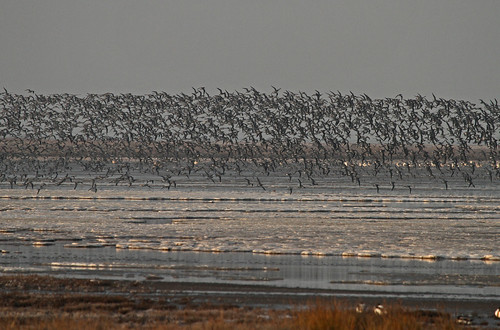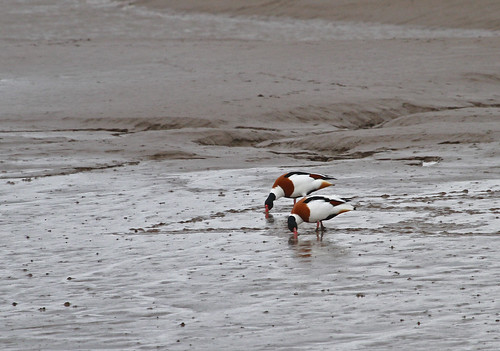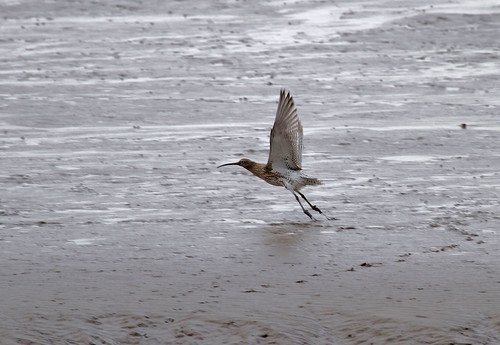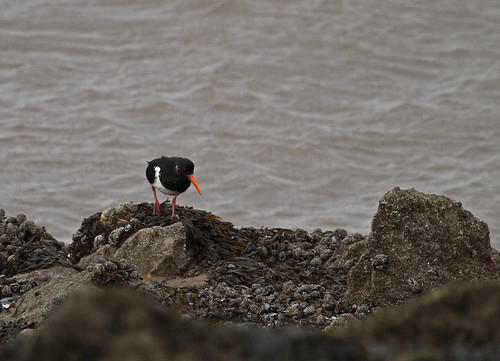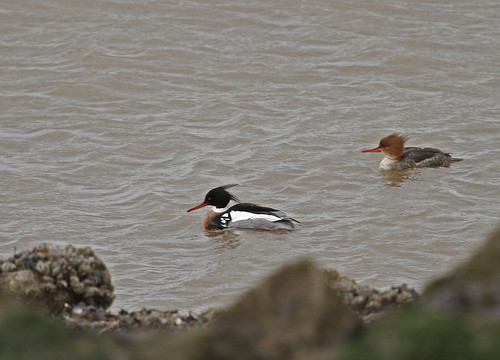I spent the last week of August on holiday in Northumberland. I like it up there for a number of reasons, the main one being the great variety of wildlife. I was based in Bamburgh, which apart from having a spectacular castle, is right on the coast with miles of huge beaches which are thronged with birdlife.
 A young knot, one of a mixed flock of knot (Dansk: Islandsk ryle) and turnstone on the beach at Bamburgh. The peachy brown colour on its breast gives it away as a youngster.
A young knot, one of a mixed flock of knot (Dansk: Islandsk ryle) and turnstone on the beach at Bamburgh. The peachy brown colour on its breast gives it away as a youngster.

…and a turnstone (Arenaria interpres)
These two species were numerous on all the beaches and flew low over our heads in small flocks as we were bodysurfing the waves. The Danish name for a turnstone is a ‘stenvender‘ which translates directly as ‘turnstone‘, so it’s tempting to think that our Nordic ancestors brought the name with them when they arrived here over a millenium ago!

The turnstone is exclusively coastal and is very aptly named as it flips stones of all sizes in its search for insects and other invertebrates lurking beneath. It is also a scavenger and its entry in the British Trust for Ornithology (BTO) Birdfacts reveals it has been known to feed on corpses! It breeds in the high Arctic and is a passage and winter visitor to UK shores and is one the worlds longest migrators, turning up as far south as South Africa. Consequently it can be seen in many parts of the world as it overwinters in Africa, South America, southern Asia and Australia.
Knot, Calidris canutus, are also coastal passage or winter visitors in the UK. They breed in Greenland and Siberia where there habitat is wide open tundra. They feed on insects and plants in the summer and in wintertime on molluscs from the intertidal area of beaches, from which it’s specific taxonomic name ‘canutus‘ is derived from the name of the Norse king Canute, so this species has a definite Viking link (Danish ‘Islandsk ryle‘). Outside the breeding season they can flock together in enormous numbers, 100,000+ (I’m not quite sure how they’re counted though!)

This pair of knot are living up to their name, running through the surf
The beaches were home to lots of waders in Bamburgh but the rest of the village was also home to non-marine species, most notably swallow, house martin, pied wagtail and linnet.

A swallow stretching its wings on the garden fence. A couple of weeks later it will be heading south and then on to South Africa
Our garden played host to flocks of swallow and house martin who were busy hunting insects over the adjacent meadow, and pied wagtail (Dansk: hvid vipstjert) which are resident in the UK and are ubiquitous in parks and gardens picking invertebrates from the grass.

A pied wagtail youngster, above, and an adult…
 The adult has a white face and black cap and breast which the youngster hasn’t yet acquired
The adult has a white face and black cap and breast which the youngster hasn’t yet acquired
A walk around Bamburgh Castle and the playing field at the foot of the castle was accompanied by lots of linnet. Linnet are resident in the UK but their conservation status is red due to decline in the breeding population so it was good to see them in such numbers:

Linnet male looking for grass seeds on the cricket pitch under Bamburgh Castle
There was a family of linnet on top of the castle walls with the adults feeding the fledglings and on the playing field beneath this imposing superstructure was a mixture of numerous wagtails and linnet.
I think the chap in the photograph has some unusual colouration. He has the fading pink breast and red forehead spot of a cock linnet approaching Autumn, but the greater covert feathers on the wings (the ones at the top of the black primary flight feathers) are dark brown. I’d expect them to be the same lighter brown colour as higher up the wing and back. Maybe that happens at this time of year too.
Other highlights around Bamburgh were a flock of approximately 100 lapwing over the fields between bamburgh and Seahouses and on another day a flock of around 50 curlew (Danish ‘storspove‘). And to the north of Bamburgh lies Budle Bay which when the tide is out plays host to large nubers of waders, gulls and other seabirds.

A curlew (Numenius arquata) on the tidal mudflats of Budle Bay
As well as curlew there were oystercatcher, black headed gull, redshank, knot, turnstone and mute swan all visible from the side of the road. I was guilty of one of my more scatterbrained moments on this trip as I forgot to pack my binoculars. I’m fairly sure that with some ocular assistance I’d have found alot more species out there.

A pair of mute swans on Budle Bay after the tide has come in













